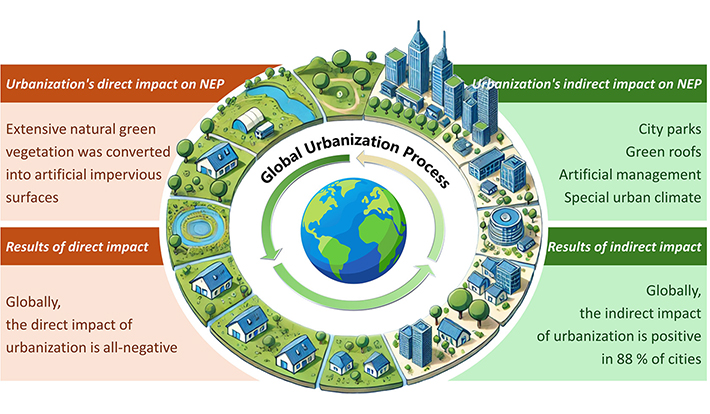Global urbanization indirectly ‘enhances’ the carbon sequestration capacity of urban vegetation
发表期刊:Geography and Sustainability
分区:中科院一区
影响因子:8.0
Urbanization radically alters the climatic environment and landscape patterns of urban areas, but its impact on the carbon sequestration capacity of vegetation remains uncertain. Given the limitations of current small-scale ground-based in situ experiments, the response of vegetation carbon sequestration capacity to urbanization and the factors influencing it remain unclear at the global scale. Using multisource remote sensing data, we quantified and differentiated the direct and indirect impacts of urbanization on the carbon sequestration capacity of vegetation in 508 large urban areas globally from 2000 to 2020. The results revealed that the direct impacts of urbanization were generally negative. However, 446 cities experienced an indirect enhancement in vegetation carbon sequestration capacity during urbanization, averaging 19.6 % globally and offsetting 14.7 % of the direct loss due to urbanization. These positive indirect effects are most pronounced in environments with limited hydrothermal conditions and increase most in densely populated temperate and cold regions. Furthermore, indirect impacts are closely related to urbanization intensity, human footprint, and level of urban development. Our study enhances the understanding of how the carbon sequestration capacity of vegetation dynamically responds to changes in the urban environment, which is crucial for improving future urban vegetation management and building sustainable cities.


